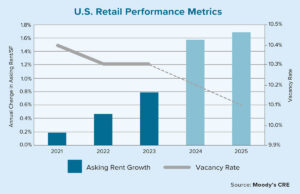The new ice rink was teeming with skaters of all ages during a Saturday afternoon public skate at the Kraken Community Iceplex, the epicenter of what was once the Northgate Mall on the north side of Seattle. The skating facility is part of a grand experiment being undertaken by the Simon Property Group, the largest mall operator in the U.S. And it may be one of the models for how traditional malls will change in the future.
To say this change is radical would be an understatement. Much of the mall, which for decades held dozens of retail spaces, anchor stores and a food court, has been demolished and replaced by a mixed-use, transit-oriented development. The iceplex includes three rinks, with one being the practice facility for the National Hockey League’s newest team, the Seattle Kraken.
Also at the facility is the official Kraken team store, the team-staff offices and a Starbucks (this is Seattle, after all). To the south is a restaurant and a Nordstrom Rack — the only clothing store in the footprint of the old mall. To the north is a Barnes & Noble bookstore, a Bed, Bath and Beyond, and a bank. A smattering of restaurants and smaller businesses can be found around the site’s perimeter.
At the time of this writing, the facility will soon gain the 32 Bar & Grill and a Virginia Mason Franciscan Health Medical Pavilion. Hockey fans know that a medical facility might come in handy for the Kraken players, but it also is part of a larger vision in which a mall can be transformed into its own ecosystem where people live, shop, seek entertainment and visit a doctor.
Online sales only account for 20% to 25% of the entire (retail) business, so 75% of sales still involve customers shopping in a store.
James Alt, managing director, Huron
In recent years, a group of apartment buildings were built around the mall and more are on the way. Two new hotels, and an estimated 900,000 square feet of Class A office space along with first-floor retail, are planned for the area. Northgate Station, which is adjacent to a new light rail line, also will include parks and public spaces.
Partnering with an NHL team makes this mall repurposing a unique endeavor. It comes at a rocky time for the retail sector. Many pundits have said that the growth in online sales is imperiling the traditional American mall. In 2019, news outlets wrote stories about how
more than 9,000 stores were expected to close that year alone, marking the end of a brutal decade for the retail industry.
And, of course, the COVID-19 pandemic has only exacerbated these conditions. Coresight Research released a report in 2020 that estimated
about 25% of the country’s 1,000 malls may close in the next three to five years. James Alt, managing director of Huron, a consultancy group that works with clients to navigate changes in industries such as retail, doesn’t buy the death-knell prediction for malls.
“I think that’s an extreme position,” Alt says, when talking about their demise. “Retail is a $6 trillion industry. And even today, coming out of the pandemic, online sales only account for 20% to 25% of the entire business, so 75% of sales still involve customers shopping in a store.”
That said, Alt certainly believes the mall model has to change. He says that many malls are facing a troubled future, especially in light of the losses of crucial big-box anchor stores, such as Sears, J.C. Penney and Macy’s. But he is hearing some optimism from retailers that sales are beginning to level off between online purchases and in-store transactions as brick-and-mortar stores work to match online prices and make in-store pickups easier for those who buy online.
Alt says he thinks that Simon Property Group’s Northgate Station project is the right idea. Consumers want more activities, restaurants and options with their malls. And while mall owners and retailers are trying to figure out how to best meet the needs of consumers, the retail sector still has a long way to go on this path.
“Consumers want a diverse shopping experience that’s more of a lifestyle experience,” Alt says. “They want an ecosystem where they can live, shop and eat. They want to have a variety of entertainment options and, yes, go to the doctor’s office. I think we are closer to the beginning than the end on these changes, but it’s an exciting time for the retail sector.”
In the next 12 to 24 months, Alt says he expects that retailers will begin creating a seamless transition between the online world and the retail store at the point of sale. If a dress in the store is the wrong color, the retailer will immediately send the right-colored dress to the consumer. He names Lululemon as one retailer that has made visible strides in this area.
As for other changes, Alt expects mall owners to begin using swaths of their massive parking lots for other purposes, such as pickup facilities for online buyers or new entertainment options beyond the movie multiplex. Who knows? Maybe even a new hockey rink will be coming to more area malls in the near future. ●
-
Jeff Bond is editor of Scotsman Guide Commercial Edition.
View all posts





